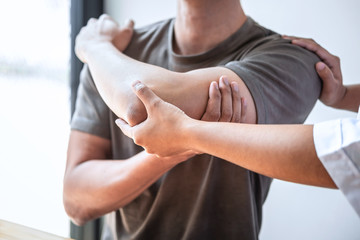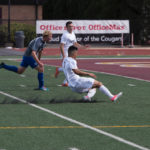
Common lower limb acute injuries in kicking sports

Kicking sports such as AFL and soccer involve a repetitive motion required to transition the ball from all sides of the field. The kicking movement demands a combination of flexibility, strength and the ability to apply force quickly. When trying to do so, it’s not uncommon for injuries to arise and limit the amount of time on field. The specific mechanics involved in kicking are mainly a combination of hip flexion and extension. Due to this, it’s common that particular muscles are more vulnerable to injury. Here is a small list of some of the more frequently occurring acute injuries found in kicking based sports…
Hamstring Strains:
- Hamstring strains are common within kicking sports due to the kicking mechanism itself. When bringing the leg back in preparation to kick the ball, the hamstrings work hard by contracting and shortening in length at the hip and the knee. The leg is then rapidly accelerated forward, taking the shortened hamstrings into a lengthened position. This can damage the hamstring in two possible ways. The first can be through the lengthening, or over-stretching of the muscle. The second is through the speed in which this dynamic change of position occurs. This happens particularly when trying to decelerate the leg.
- Some signs and symptoms of hamstring strains may present through a sudden popping or snapping sensation at the back of the leg. This may precede other factors such as pain, swelling and even bruising of the back of the leg. Hamstring strains may also present through pain around the buttock area, particularly when stretched, sitting and even standing up.
Groin Strains:
- This occurs with damage to the adductor muscle group, and more commonly the adductor longus muscle. As well as helping with hip flexion, an important part of any kicking motion, the adductor muscles can bring the leg closer to the mid-line of the body (adduction). This is of particular interest in kicking sports where athletes appear to kick around corners, like a banana kick in AFL, or a squaring ball in soccer.
- Some symptoms and presentations of groin strains include tenderness and pain on the inside of the thigh. Pain and/or tightness when stretching the groin, limiting the muscle’s ability to be taken through its full range of motion. Pain when squeezing your legs together can also be expected.
- More information regarding the importance of adductor strength can be found here.
Contusions:
- Despite contusions or bruises, being as a direct result of someone else kicking, they still pose a real and common threat to those engaging in kicking sports. Contusions occur with excessive, direct contact to part of the leg, damaging the small blood vessels supplying that area. These injuries should be treated equally as important as those such as muscle strains or ligament sprains, as they can escalate to more serious health conditions.
- The current management of contusions includes ice, compression, elevation and the lengthening of the damaged muscle area.
If you would like to learn more about acute kicking based injuries or have experienced some of the symptoms mentioned, come check out the amazing team at Pivotal Motion Physiotherapy. With a wealth of knowledge and a friendly smile, they will happily get you back on track.
Book an appointment by calling (07) 3352 5116




